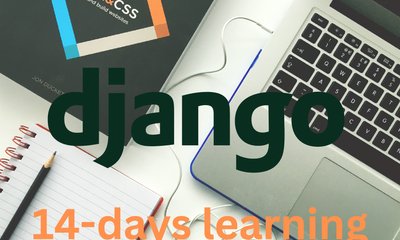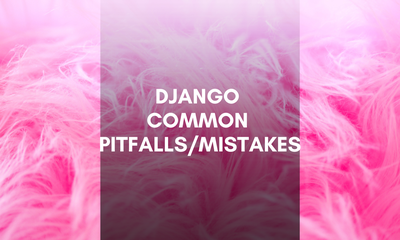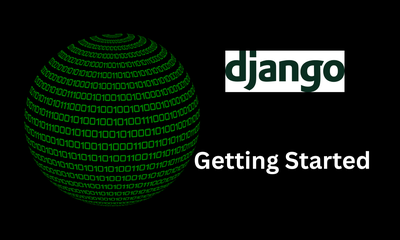Learn Django in 14 days
By JoeVu, at: April 27, 2023, 11:01 p.m.
Estimated Reading Time: __READING_TIME__ minutes


Django is a powerful and popular web framework for building web applications in Python. With its batteries-included philosophy and its focus on rapid development, Django has become a favorite among developers for creating scalable and robust web applications.
If you're new to Django, learning it can seem overwhelming at first. That's why we've put together this comprehensive guide to help you learn Django in 14 days. Our plan covers all the essential topics and provides exercises and solutions to help you solidify your understanding of each concept.
Our 14-days plan is designed for beginners who have some experience with Python and web development. If you're new to Python or programming in general, we recommend that you first learn the basics of Python and HTML/CSS before diving into Django.
The goals of this 14-days plan are:
- To give you a solid understanding of Django and its core concepts.
- To enable you to create simple to complex web applications using Django.
- To provide exercises and solutions to help you practice what you learn.
- To prepare you for real-world Django development.
Before we begin, there are a few things you need to prepare:
- Python: Django is built in Python, so you'll need to have Python installed on your computer. You can download Python from the official website (https://www.python.org/downloads/). Make sure you download the latest version.
- A text editor: You'll need a text editor to write your code. There are many great text editors to choose from, including Visual Studio Code, Sublime Text, and Pycharm. You can follow this article to see what fit you the best.
- A command-line interface: You'll need to use a command-line interface to run Python and Django commands. On Windows, you can use the Command Prompt or PowerShell. On Mac and Linux, you can use the Terminal or iTerm
With these tools in place, you're ready to get started with Django.
Here is the outline of the 14-days plan
- Day 1: Getting Started with Django
- Installing Python/Django/Virtualenv
- Creating a Django project
- Running the development server
- Useful packages
- Exercise 1: Creating a new Django project
- Day 2: Models and Databases
- Creating models
- Database migrations
- Querying the database
- Useful packages
- Best Practices
- Exercise 2: Creating a todo app with models and database
- Day 3: Admin Interface
- Customizing the admin interface
- Creating admin actions
- Useful packages
- Best Practices
- Exercise 3: Adding custom functionality to the admin interface
- Day 4: Views and Templates
- Creating views and templates
- Rendering context data in templates
- Useful packages
- Best Practices
- Exercise 4: Creating a home page view and template
- Day 5: URLs and Routing
- URL routing
- Using regular expressions in URLs
- Useful packages
- Best Practices
- Exercise 5: Adding URLs and routing to the blog app
- Day 6: Forms and Validation
- Creating forms
- Form validation
- Useful packages
- Best Practices
- Exercise 6: Adding a comment form to the blog app
- Day 7: Static Files and Media
- Serving static files
- Uploading and serving media files
- Useful packages
- Best Practices
- Exercise 7: Adding image uploading functionality to the blog app
- Day 8: User Authentication and Authorization
- Creating user models
- User authentication
- User authorization
- Useful packages
- Best Practices
- Exercise 8: Adding user registration and login to the blog app
- Day 9: Deployment
- Preparing the project for deployment
- Deploying to a server
- Useful packages
- Best Practices
- Exercise 9: Deploying the blog app to a server
- Day 10: Testing and Debugging
- Writing tests
- Debugging techniques
- Useful packages
- Best Practices
- Exercise 10: Writing tests for the blog app
- Day 11: Advanced Topics
- Custom template tags
- Django REST framework
- Useful packages
- Best Practices
- Exercise 11: Creating a RESTful API for the blog app
- Day 12: Project Development
- Working on a project of your own
- Exercise 12: Developing a project using Django
- Conclusion
- Recap of what was learned
- Resources for further learning and practice
Each article in this series covers a specific topic related to Django, providing in-depth explanations, examples (with code snippet), and exercises to enhance your understanding and practical skills. By following this comprehensive guide over a span of 14 days, you'll be well-equipped to develop scalable and robust web applications using Django.
In the next article, we will get started with a simple Django web application - bookstore management app.





